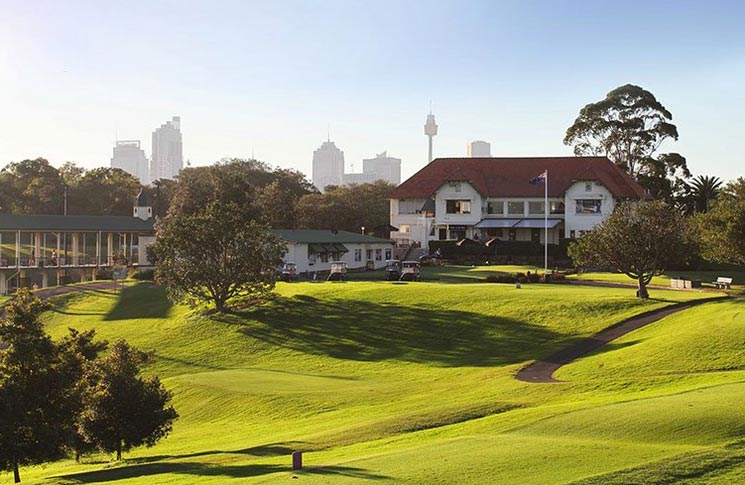Crudely paraphrasing Heraclitus, as I am wont to do, there is uncertainty in all things. That’s especially so in a run-up to a British Open. As it is, we don’t even know what to call it for certain, but forget that tedious debate. Trying to be sure of who will most successfully navigate his way to the claret jug is like predicting the outcome of a 12-way Jenga match (soon to be on ESPN8, the Ocho), based on the hair color of the participants. The British Open is a kind of golf so foreign to the golf we normally see that it takes on a rhythm more like mudlarking or geocaching. The winner seems to have emerged from some unexpected place like a rare piece of buried soup tureen from the early Victorian period washing up on the shores of the Upper Thames or a worn travel bug tucked in an out of the way corner of the Yuma Territorial Prison in Arizona.
But I digress.
Or do I? Fact is, the Champion Golfer of the Year is almost unerringly unknowable, certainly recently. Maybe only once in the last 15 years has the British Open winner been kind of a favorite. That could have been last year when Xander Schauffele won in the midst of a two-major season, but even then prior to last year Schauffele had never recorded a top 10 in the Open.
All this falderal, of course is mere prologue to what will be my most assuredly unsuccessful pick for the winner of this year’s Open Championship at Royal Portrush. Like nearly all Open Championship venues, Portrush seems straightforward and understandable from a distance, brawny, yes, but fair. But presented with its punishment up close you soon begin to feel as though there are trap doors at every turn. And that’s even without the wind. The bounce at Portrush is the cruel enemy, largely because it is an aspect of the game that most elite golfers don’t have much call for.

GLYN KIRK
What makes us appreciate the British Open is that your regular game really won’t do. Now it helps if like Shane Lowry, the last winner at Portrush, you were raised with this other game, this game that taps into your intuitive golfing soul, a game that creates new kinds of swings and plays from a textbook not yet written. It’s funny, or maybe disappointing, that big-bashing Bryson talked this week about having hit upon a way of figuring out how to play this foreign version of the game. Like he had come to some revelation of a mathematical theorem that somehow discovered a geometric progression and common ratio that linked wind speed and direction to a precisely coordinated line of play. This is like asking ChatGPT to write a love letter to your Sweet Babboo. It’s either in your soul or you’re just basically filling in the blanks in a Mad Lib.
It’s not that DeChambeau can’t figure out how to play an Open Championship. It’s that he, or anyone else, seems best when they realize the figuring out process is more organic, evolving in the moment. The questions are changing all the time. The uncertainty of the Open is its joy. Unless of course you ask ChatGPT on how to play links golf. Then, you get such gems as “Keep the ball low” and “With wind you might need to use 2–3 more or fewer clubs than usual.” Thanks, Sherlock. All of a sudden I feel like reference librarian Katharine Hepburn in “Desk Set,” grimacing, arms folded at the electronic brain fact-checking computer built to replace her, reciting the lines from “Curfew Shall Not Ring Tonight.”
But then feeling like Katharine Hepburn I’d submit might be as good as it gets.
Moving on. For all its original article portent, golf even in the dunes of the Antrim coast remains evolvingly modern. It’s not like we’re asking the boys to wear knickers and tweed or even the billowing waterproofs donned by Max Faulkner when he won at Portrush at its first Open in 1951. There are GC Quads and Trackman 4s all over the range and frankly walking the fairways held by their various seconds and henchmen. These are professional athletes and if the wind doesn’t become at least a little menacing, the golf course will be not much of a match for the best. Lowry set an Open scoring record the last time here and made 23 birdies for the week. The same seems at least semi-likely this week, which of course means it’s open to anyone, just like a John Deere or a Travelers or a Phoenix Open.
For all of that simplicity, there remains the inscrutability of a course comprised of holes named for dead golfers and unmanned train stations. And since my abilities to employ actual statistical theory to the result are somewhat akin to my abilities to prepare a proper Yorkshire pudding, my toad in the hole notwithstanding, my chances of finding numbers that lead me to the right answer this week seem as robust as Bryson’s self-predicted success.
So I didn’t.
Instead of using science, I opted for a pseudo-science so invalidated by modern science that most people have forgotten about it. The theory of biorhythms is that all human performance is regulated by cycles, largely physical, emotional and intellectual. Generally, these cycles overlap in a series of sinusoidal curves that can overlap but rarely do. Because I had some time on my hands, I examined the biorhythms of the last 15 Open champions. There was of course no correlation to the biorthym charts of the champions. They varied in a way that made less sense to me than the way Bryson explains face curvature on his irons. Which is a bit like the first time you hear that spotted dick is something one eagerly consumes for dessert.
And yet, here I was committed to a completely baseless science in making a major pick sure to go wrong. Using Lowry as my touchstone, I found the players in the field who like Lowry in 2019 had not won a major but had recorded at least four top 10s in majors coming into the British Open. That relatively short list included some notable crowd favorites like Tommy Fleetwood and Lee Westwood, as well as some reasonable choices like Tyrrell Hatton, Viktor Hovland and Harris English. I opted for none of those because I decided to base my choice on the player whose biorthym chart lined up with the average biorhythms of the last 15 Champion Golfers of the Year.

Ramsey Cardy
Only one came close, and not surprisingly, not that close at all. But because my reading of his chart showed characteristics of having “high vitality” and “accepting and understanding new ideas, theories and approaches” and “feeling most creative,” I thought this clearly describes the freedom to just turn it loose that the Open demands. Never mind that these thoughts seem to run counter to the public persona of my choice. He’s been on the short list of future major champions since he was the best amateur in the world for more than a year. Sure, Patrick Cantlay seems to have faded from view, but his statistical position through the bag is better than Shane Lowry’s was six years ago, and he ranks in the top 12 in strokes gained/approach, around the green and tee to green. Only the putter has been lacking and with Portrush’s greens at a more conservative pace, could he find the stroke that gave him the nickname Patty Ice four years ago on his way to the FedEx Cup? Maybe.
But I like one other more important reason to pick the lad from California with just a bit of Irish in his blood: His birthday, St. Patrick’s Day. Is there a better reason to pick Cantlay to win the Open this week? No. There aren’t any reasons to pick him. That’s why I will be doing just that.
This article was originally published on golfdigest.com



